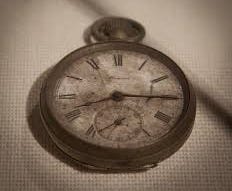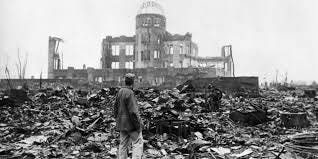Why Hiroshima?
Exactly Eighty Years Ago Today
Twelve U.S. Navy fliers, having been shot down over Japan, are held in a city jail awaiting transfer to a prison camp. Earlier in the morning there was an air raid siren, followed by the all clear. The time is 8:15 A.M. The weather is clear and calm. In a moment, the world goes wrong.
Nearby, the temperature suddenly reaches that of the surface of the sun. Everything is blindingly white, then darkness as the building in which they are housed collapses. A moment later an ear-splitting reverberation hits. Several of the fliers are killed instantly. Two men, nineteen-year-old Airman 3rd Class Normand Brissette and twenty-three-year-old Staff Sergeant Ralph Neal, are pulled from the wreckage of the jail. They see glass strewn everywhere; entire streets destroyed. People are screaming, calling out names of their loved ones. A hysterical woman cradles her young child, calling their name and crying, “Open your eyes! Open your eyes!”
Brissette and Neal don’t yet know it, but within a matter of weeks they will both die from the poison infecting their bodies.
The date is August 6, 1945. High above the carnage of what was once the city of Hiroshima the crewmen of the Enola Gay, a plane blessed for its mission by a Catholic priest, can summon only two words to describe what they helped wrought: “My God!” President Truman, who made the decision to drop the bombs, refers to the destruction as “the greatest thing in history.”
Eighty years ago, to the minute, an atomic bomb was used against human beings for the first time.
I am in Japan, and am publishing this at 8:15 A.M. on August 6, 2025, local time and date. Last week I visited the Hiroshima Peace Memorial Museum. Despite already knowing much of the history of that terrible day, I found myself emotionally overwhelmed more than once during my visit. Much has been said as to why nuclear weapons were used against the Japanese population, including by me in the August 6 story in my book. For today, I wish to take a closer look at why the city of Hiroshima in particular was chosen as the initial target for such an atrocity.
Almost three months before the first bomb was even tested, the Target Committee held its first meeting. The April 27, 1945 discussion between military personnel and scientists examined several criteria for selecting the unfortunate target. It was decided the target must be an important metropolis, with an urban area greater than three miles in diameter. It must also have geography that would maximize blast damage to inflict additional psychological horror upon the Japanese populace. Another criterion was that the city be “pristine,” having not yet been attacked nor there being any plans to attack it with conventional bombs. It was desired to see the full destructive effects of the new weapon.
By the time of the second meeting in mid May the list had been narrowed to four cities: Kyoto, Yokohama, Kokura, and Hiroshima. Kyoto was favored for being the nation’s former capital, and that much industrial capacity had moved there after being destroyed in other cities. Hiroshima was also favored as an important army depot and urban industrial area, and because the surrounding hills would create a focusing effect to increase the destruction.
By July 25, after a bomb had been successfully tested, Kyoto was removed from the list. The new potential targets besides the original Hiroshima and Kokura were Nagasaki and Niigata. The latter was soon ruled out and on August 2 Hiroshima was finalized as the primary target for the August 6 bombing.
The “Little Boy” uranium weapon exploded at a height of 600 meters above the city with a force of 16 kilotons. On the ground directly below the explosion, temperatures reached 4,000 degrees Celsius. At a distance of over a kilometer nearly all died either instantly or within a few days. People burned at a distance of 3.5 kilometers from the blast center. Hair scorched, and skin sloughed from their bodies, hanging from people like tattered rags.
By the end of the year approximately 150,000 people died from the effects of the bombing of Hiroshima.
Get both volumes of On This Day in History Sh!t Went Down at JamesFell.com/books.




I visited the Peace Museum the two times I've been to Japan. I can't get past the little lunchbox in the exhibit without starting to cry.
There are no words…